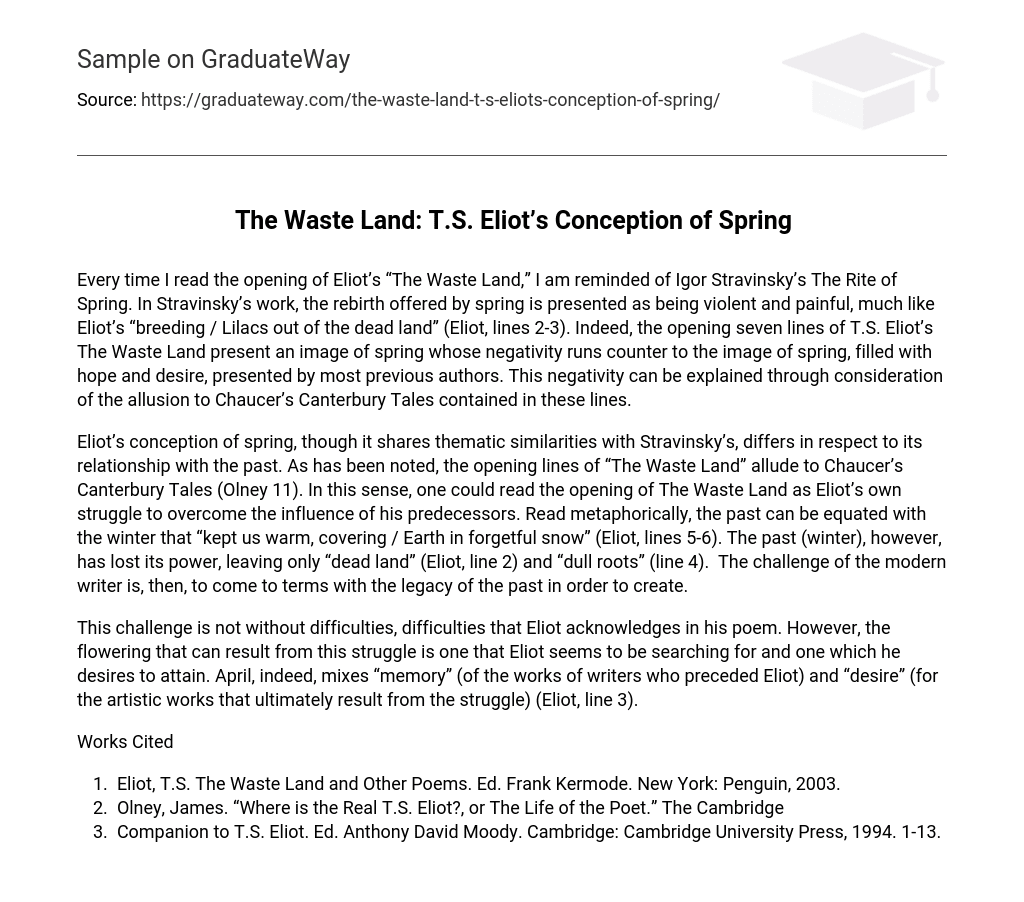Every time I read the opening of Eliot’s “The Waste Land,” I am reminded of Igor Stravinsky’s The Rite of Spring. In Stravinsky’s work, the rebirth offered by spring is presented as being violent and painful, much like Eliot’s “breeding / Lilacs out of the dead land” (Eliot, lines 2-3). Indeed, the opening seven lines of T.S. Eliot’s The Waste Land present an image of spring whose negativity runs counter to the image of spring, filled with hope and desire, presented by most previous authors. This negativity can be explained through consideration of the allusion to Chaucer’s Canterbury Tales contained in these lines.
Eliot’s conception of spring, though it shares thematic similarities with Stravinsky’s, differs in respect to its relationship with the past. As has been noted, the opening lines of “The Waste Land” allude to Chaucer’s Canterbury Tales (Olney 11). In this sense, one could read the opening of The Waste Land as Eliot’s own struggle to overcome the influence of his predecessors. Read metaphorically, the past can be equated with the winter that “kept us warm, covering / Earth in forgetful snow” (Eliot, lines 5-6). The past (winter), however, has lost its power, leaving only “dead land” (Eliot, line 2) and “dull roots” (line 4). The challenge of the modern writer is, then, to come to terms with the legacy of the past in order to create.
This challenge is not without difficulties, difficulties that Eliot acknowledges in his poem. However, the flowering that can result from this struggle is one that Eliot seems to be searching for and one which he desires to attain. April, indeed, mixes “memory” (of the works of writers who preceded Eliot) and “desire” (for the artistic works that ultimately result from the struggle) (Eliot, line 3).
Works Cited
- Eliot, T.S. The Waste Land and Other Poems. Ed. Frank Kermode. New York: Penguin, 2003.
- Olney, James. “Where is the Real T.S. Eliot?, or The Life of the Poet.” The Cambridge
- Companion to T.S. Eliot. Ed. Anthony David Moody. Cambridge: Cambridge University Press, 1994. 1-13.





